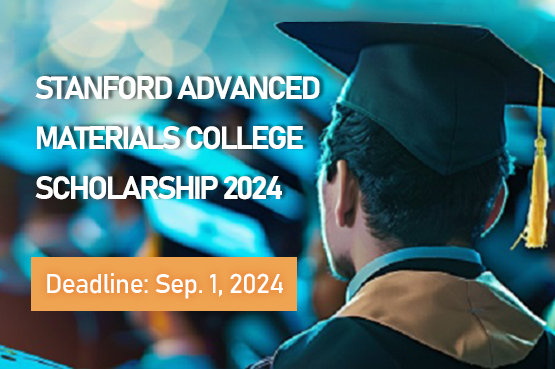Mining of NEO: To Help Sustain the Supplies of Rare Metal Materials
The greatest technological problem that the human race faces in the next decade is the number of available resources such as rare earth metals. With a continuing increase in population and the use of rare earth metals in technology applications—such as electric vehicles, batteries, cell phones, and other portable devices—the demand for the resources needed to make these products stress existing supply lines and global reserves of the metals. These rare metals and compounds will be removed entirely from the Earth if there is a dramatic escalation in their use (Hayes, 2020). Some solutions are increasing the efficiency of recycling, or the increased efficiency of rare earth products such as batteries, to begin with, thus requiring fewer materials to make these products. These solutions are feasible right now. Nevertheless, none of these resolutions alone will help sustain the supplies of these rare materials long-term. The solution with the most potential to sustain technological development along with supplying the materials to build advanced technology requires a progressive solution: the mining of Near Earth Objects (NEOs).
Mining NEOs is commonly referred to as asteroid mining. In the asteroid belt, and even close to Earth’s orbit, there are asteroids or other objects that pass by containing materials needed for an advanced technological society. The most valuable are M-type asteroids, which consist primarily of metals. These metal asteroids are often composed of iron/nickel substances. Some asteroids are also thought to contain other valuable metals such as cobalt, gold, and platinum (Lewis, 1998),(Elvis, 2021). Especially in the use of lithium-ion batteries, high-quality nickel and cobalt are necessary to the function of the batteries. On Earth, these materials are limited to select regions of the world, often with inhuman or poor working conditions.
Another category of NEOs is those that contain water. On Earth, the UN predicts that the population will increase to 8.5 billion people by the end of the next decade—adding three-quarters of a billion people (United Nations, 2015). Similarly, Castelo (2021) found that 70% of the Earth’s surface is water, with a mere 3% being freshwater. After accounting for all the freshwater that is inaccessible, only 0.4% is usable and drinkable water. That remaining 0.4% will be shared among the projected population of 8.5 billion people by 2030. As previously stated, some NEOs contain water, and even simple technology such as heat in an enclosed space would release an abundant supply of water. This water could then be distributed to avoid dehydration, droughts, or water rations on Earth.
That said, it is essential to state that developing this technology and infrastructure would not be easy, cheap, or quick. Nevertheless, it is vital to the survival and progression of the human race. An influx of metals, water, and other essential compounds will relieve the stress on industries outside of technology and food like construction, aviation, automotive, renewable energy, and almost any other industrial need on Earth.
These materials will not only be accessible, but cheap as a result. In energy storage, for example, an asteroid mined with a substantial amount of class one nickel will considerably reduce the price of the battery, and those savings should pass onto the consumer. This trickle-down effect will make energy storage and electric vehicles more accessible. Even simple applications like steel for buildings or aluminum for car bodies would significantly lower the cost of production.
An unintended consequence of the modernization of the space industry is creating the infrastructure to capture and mine asteroids in orbit, on the lunar surface, or transport them to Earth. This infrastructure will advance the space industry. By creating an environment where space is accessible to more people with less fiscal investment, metals mined in space could provide the construction materials for new orbital space stations or lunar colonies. These new structures will help mine and refine the materials. Consequently, rockets leaving Earth can be smaller and with larger passenger capacities since the building materials—sourced from space and not the Earth—will reduce the need for cargo brought from the surface. Moreover, this will also minimize the cost by reducing the amount of fuel needed to reach orbit. A rocket with more passengers, less payload, and therefore less fuel will result in the cost per person for an orbital launch plummeting (Weinzierl & Sarang, 2021). Mining companies, when constructing bases or orbital stations, could offset the cost of development by providing an opportunity for other intrasolar missions. Missions to Mars or other places in the solar system would become feasible with the construction of these ports.
Although this idea is more than ambitious and far from easy, the human race must undertake NEO mining and beyond to survive into the next century. Proving rare earth metals and water create an environment on Earth where eight or even nine billion people become sustainable without compromising the quality of life. More access to building materials would make the development and construction of new buildings and infrastructure cheaper. Lastly, asteroid mining is a branching point for the human race to become a safe intrasolar species, thus providing pockets of human life through the solar system and creating a more secure species in the event of severe trauma to the planet Earth.
References
Castelo, J. (2021, March 6). What is the percentage of drinkable water on earth? World Water Reserve. https://worldwaterreserve.com/water-crisis/percentage-of-drinkable-water-on-earth/.
Elvis, M. (2021). Asteroids: How love, fear, and greed will determine our future in space. Yale University Press.
Hayes, C. (2020, September 14). What will happen when the raw materials run out? RSS. https://eandt.theiet.org/content/articles/2020/09/what-will-happen-when-the-raw-materials-run-out/.
Lewis, J. S. (1998). Mining the sky: Untold riches from the asteroids, comets, and planets. Addison-Wesley.
United Nations. (2015). Population 2030: Demographic challenges and opportunities for sustainable development planning. United Nations, Department of Economic and Social Affairs, Population Division. https://www.un.org/en/development/desa/population/publications/pdf/trends/Population2030.pdf.
Weinzierl, M., & Sarang, M. (2021, February 12). The commercial space age is here. Harvard Business Review. https://hbr.org/2021/02/the-commercial-space-age-is-here.
Note: The article is a submission for Stanford Advanced Materials College Scholarship 2021.








